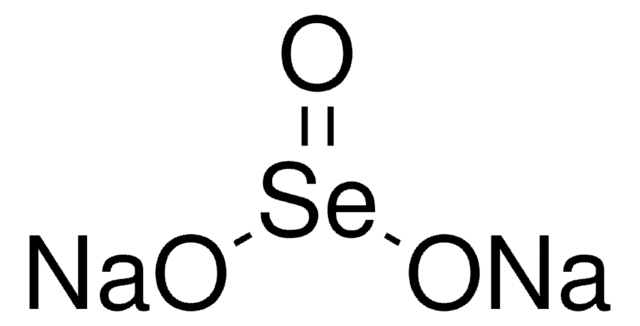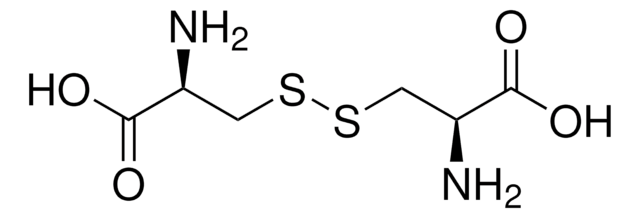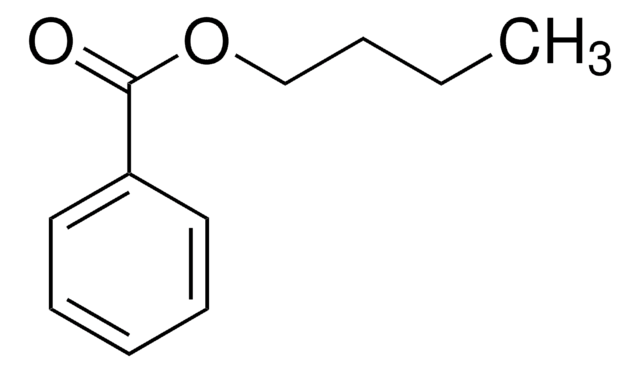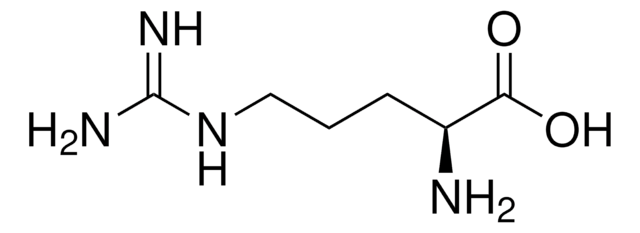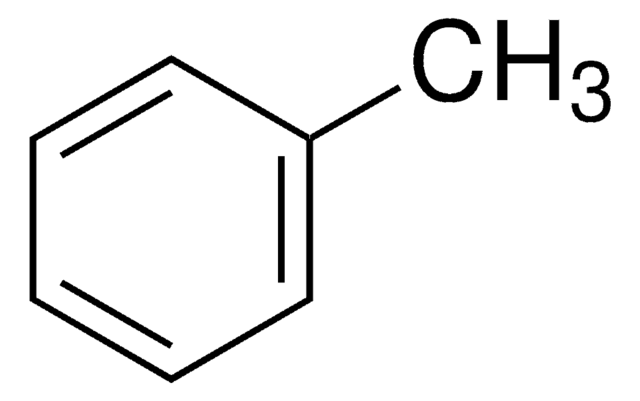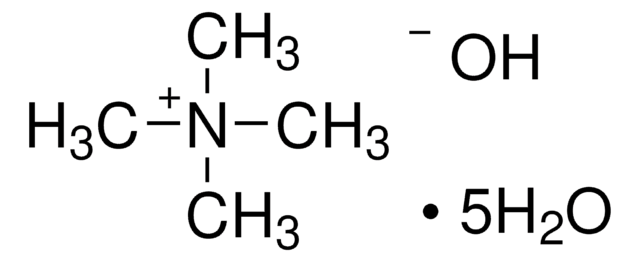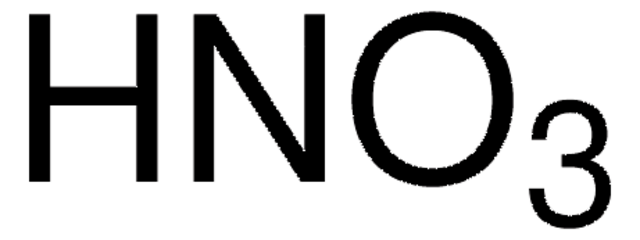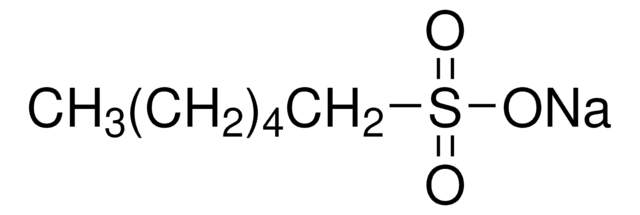13-1875
Hydrofluoric acid
JIS special grade
Synonym(s):
HF
Sign Into View Organizational & Contract Pricing
All Photos(1)
About This Item
Empirical Formula (Hill Notation):
HF
CAS Number:
Molecular Weight:
20.01
MDL number:
UNSPSC Code:
12352106
PubChem Substance ID:
Recommended Products
grade
JIS special grade
vapor density
1.27 (vs air)
vapor pressure
25 mmHg ( 20 °C)
form
liquid
availability
available only in Japan
density
1.15 g/mL at 25 °C (lit.)
SMILES string
[H+].[F-]
InChI
1S/FH/h1H
InChI key
KRHYYFGTRYWZRS-UHFFFAOYSA-N
Looking for similar products? Visit Product Comparison Guide
Application
- Speciation of tin ions in oxide glass containing iron oxide through solvent extraction and inductively coupled plasma atomic emission spectrometry after the decomposition utilizing ascorbic acid.: This study explores the speciation of tin ions in oxide glass, enhanced by hydrofluoric acid in the decomposition process for analytical purposes ( Saijo et al., 2022).
- Physicochemical and morphological characterization of a glass ceramic treated with different ceramic primers and post-silanization protocols.: This research discusses the use of hydrofluoric acid in preparing glass ceramic surfaces to enhance their physicochemical properties for dental applications ( Moreno et al., 2019).
- Chemical analysis of acidic silicon etch solutions I. Titrimetric determination of HNO(3), HF, and H(2)SiF(6).: This paper details a method for analyzing hydrofluoric acid concentrations in industrial etching solutions, providing critical insights into its effective use in silicon processing ( Henßge et al., 2007).
- Structure of a novel phosphoglycolipid from Deinococcus radiodurans.: Hydrofluoric acid was utilized in the extraction processes that led to identifying unique phosphoglycolipids, contributing to biochemical research and applications ( Jürgens et al., 1986).
Signal Word
Danger
Hazard Statements
Precautionary Statements
Hazard Classifications
Acute Tox. 1 Dermal - Acute Tox. 2 Inhalation - Acute Tox. 2 Oral - Eye Dam. 1 - Skin Corr. 1A
Storage Class Code
6.1B - Non-combustible acute toxic Cat. 1 and 2 / very toxic hazardous materials
WGK
WGK 2
Flash Point(F)
Not applicable
Flash Point(C)
Not applicable
Regulatory Information
新产品
Choose from one of the most recent versions:
Already Own This Product?
Find documentation for the products that you have recently purchased in the Document Library.
Yinquan Yuan et al.
Applied optics, 51(24), 5845-5849 (2012-08-22)
Based on fiber Bragg grating (FBG), an online monitoring system for the etching process of optical fiber in a hydrofluoric (HF) acid solution has been designed. The variation curves of the wavelength shifts of FBGs with etching time at three
Peter Dinér
The journal of physical chemistry. A, 116(40), 9979-9984 (2012-09-25)
The carbonium ion has been suggested to be the intermediate in superacid-promoted reactions (SbF(5)-HF) such as hydrogen-deuterium exchange and in the electrophilic C-H cleavage into hydrogen and the carbenium ion. In this study, the superacid-promoted C-H cleavage into hydrogen and
Marc Ruppenthal et al.
Environmental science & technology, 47(2), 949-957 (2012-12-20)
To make use of the isotope ratio of nonexchangeable hydrogen (δ(2)H(n (nonexchangeable))) of bulk soil organic matter (SOM), the mineral matrix (containing structural water of clay minerals) must be separated from SOM and samples need to be analyzed after H
Tian Tian et al.
The Journal of organic chemistry, 78(2), 728-732 (2012-12-12)
A metal-free method for the direct regioselective fluorination of anilides has been developed. In the presence of bis(tert-butylcarbonyloxy)iodobenzene (PhI(OPiv)(2)) and hydrogen fluoride-pyridine, the para-fluorination products of anilides were obtained in moderate to good yields. Because of its operational safety and
Matthew J Hesse et al.
Angewandte Chemie (International ed. in English), 51(50), 12444-12448 (2012-11-07)
E-allylic boronic esters undergo a highly diastereoselective protodeboronation with TBAF⋅3 H(2)O to give Z-trisubstituted alkenes. The selectivity can be switched to give predominantly the E-alkene instead by using KHF(2)/TsOH (see scheme). The utility of the methodology has been illustrated in a
Our team of scientists has experience in all areas of research including Life Science, Material Science, Chemical Synthesis, Chromatography, Analytical and many others.
Contact Technical Service